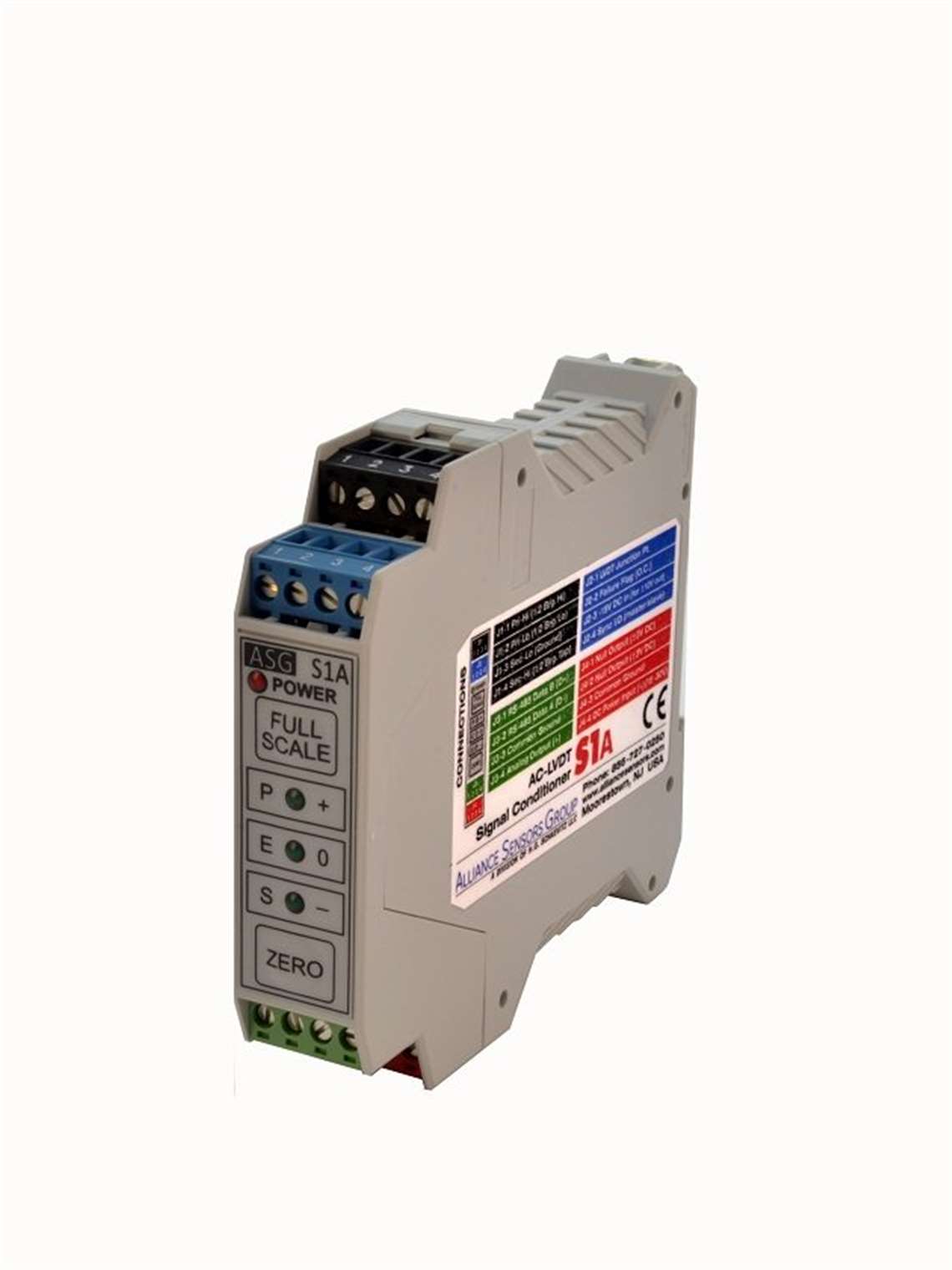Signal Conditioner
20 June 2017

H.G. Schaevitz introduced the S1A AC-LVDT Signal Conditioner designed to offer smart and fast LVDT setup with built-in null indication and simple front panel pushbuttons to set zero and full scale.
Engineered to work with a wide range of AC-LVDTs, RVDTs and inductive half-bridge sensors including 3-wire GE LVRTs and GE gas turbine LVDTs with the buck-boost, the S1A DIN rail module supports LVDT operation and indicates most common failures.
The SIA offers a choice of four excitation frequencies, eight analog DC outputs (six DC voltage and two current loop outputs) and RS-485 digital communications. Applications for the S1A module include turbine control systems, steam valve position feedback, and other types of redundant control systems that use LVDT position sensors.
In the past, AC-operated LVDT linear and rotary position sensors were difficult to calibrate as traditional signal conditioners require operators to use trimmer pots, the company said. With the S1A AC-LVDT Signal Conditioner, the internal microprocessor eliminates the need to calculate jumper connections for gain, range, etc. The operator simply finds null, then moves the LVDT core to one end of the range and presses the zero button, the company said. Once set, the LVDT core is moved to the other end of a specified range and the full scale button is pressed. The S1A is fully calibrated with the position sensor.
“The S1A works with about 98% of AC-operated LVDTs on the market, including GE gas turbine LVDTs,” notes John Matlack, VP of Sales and Marketing, Alliance Sensors Group. “With its built-in null indicator and smart setup with two front panel push buttons, the S1A AC-LVDT Signal Conditioner can calibrate LVDTs 4 to 20x faster than traditional signal conditioners.”
POWER SOURCING GUIDE
The trusted reference and buyer’s guide for 83 years
The original “desktop search engine,” guiding nearly 10,000 users in more than 90 countries it is the primary reference for specifications and details on all the components that go into engine systems.
Visit Now
STAY CONNECTED




Receive the information you need when you need it through our world-leading magazines, newsletters and daily briefings.
CONNECT WITH THE TEAM












